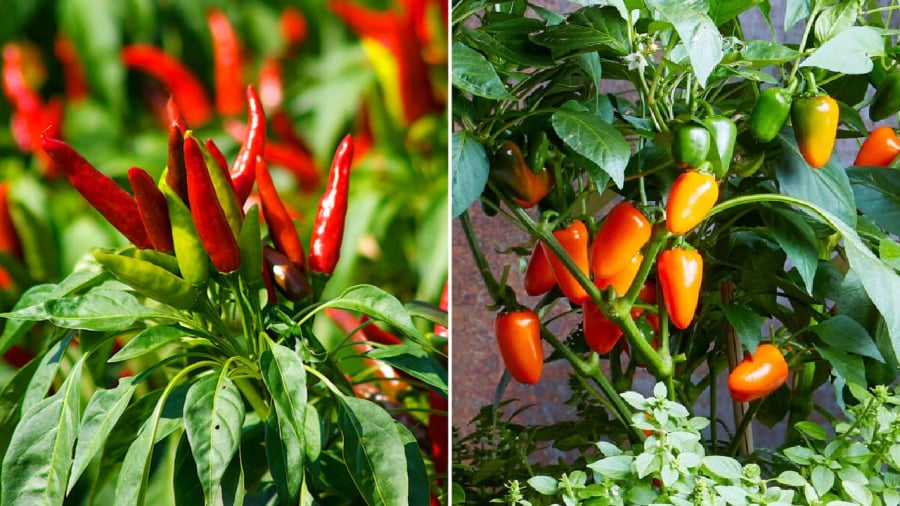Growing chili peppers is relatively easy and low maintenance. By cultivating a chili plant at home, you’ll have a convenient supply of fresh chilies and can even enjoy the aesthetics of having a houseplant that adds vibrancy to your living space. If you want your plant to bear abundant fruits all year round, there are a few tips you should keep in mind.
Tips for Abundant Chili Harvest: Pruning for a Bountiful Yield
One special trick to encourage your chili plant to bear more fruit is by pruning its tip. This simple technique, though not widely known, effectively stimulates the plant’s growth and fruit production. When you prune the tip, the chili plant focuses its energy on developing its side branches, thus promoting fruit formation instead of vertical growth.
Pruning the tip allows the surrounding branches to flourish, increasing the plant’s photosynthetic area and resulting in more fruit. Additionally, with better access to sunlight, the quality of the chilies improves.
Tip pruning also enhances airflow and creates a more open structure, making it easier to monitor the plant’s health and promptly address any pest or disease issues.
- Ideal Timing for Tip Pruning
While tip pruning is straightforward, timing is crucial to avoid stressing the plant. The right moment to prune is when the plant is strong enough to withstand the process, typically when it has grown about 6-8 true leaves and reached a height of 20-40 cm or taller. At this stage, the plant has the resilience to bounce back from pruning.
- How to Prune the Tip of a Chili Plant
To prune effectively, use a clean, sharp knife or scissors to make a cut about 2 cm from the tip. Refrain from damaging the stem or branches during this process. After pruning, the plant will start developing side branches from the leaf axils below the cut, causing the plant to grow laterally and spread outwards.
In addition to tip pruning, remove any weak, wilted, or diseased branches to maintain the plant’s health.

- Post-Pruning Care for Chili Plants
After pruning the tip, maintain a consistent watering schedule to prevent the plant from drying out and aid in its recovery. However, be careful not to overwater, as this can lead to root rot and other issues. Additionally, apply NPK fertilizer or organic compost to provide the necessary nutrients for the plant’s recovery and enhanced fruit production.
Additional Care Tips for Chili Plants
Chili plants thrive in warm environments with ample sunlight. Aim for a minimum of 6-8 hours of sunlight per day, and maintain temperatures between 20-30°C for optimal growth. Use well-draining, nutrient-rich, loose soil, and consider mixing in organic matter before planting. When growing in pots, ensure there are drainage holes to prevent waterlogging.
For watering, the best times are early morning or late afternoon to avoid rapid evaporation during the hottest part of the day. This ensures the plant receives adequate hydration without risking water stress.
By following these tips, you’ll be well on your way to enjoying a bountiful harvest of chilies all year round from your very own chili plant.






























